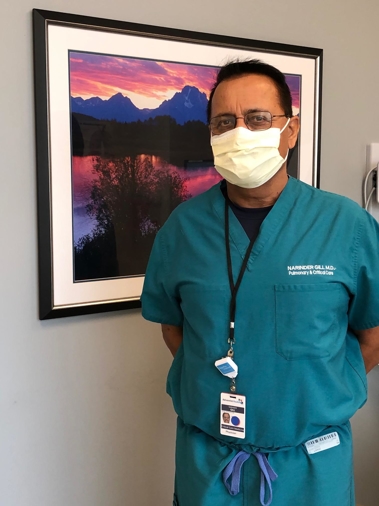October is Breast Cancer Awareness Month
Oct 14, 2020
Breast cancer is the leading cancer in women in the United States; second to skin cancers which except for melanoma are usually not invasive. It comprises 1/3 of cancers in women. About 1 in 8 women (12%) in the US will develop breast cancer at some point in her lifetime. The rate of new cases in the US per year is about 275,000 resulting in over 42,000 deaths annually.
Thinking about breast cancer is important because, if detected early enough, it is curable. Surgically removing a malignant lump before it spreads is the best way to cure it. If it has already spread, then it is more difficult to treat and cure which often involves chemotherapy and radiation. The challenge is that a tumor can start spreading to other parts of the body when about the size of a marble or even smaller and therefore too small to easily find by simply doing a self-breast examination.
Annual mammograms have been shown to be the best and most reliable way to detect lumps early. The American Cancer Society recommends that all women between the ages of 45 and 55 get a mammogram every year and that women over the age of 55 get a mammogram every other year. If a woman has first degree relatives (mother or sister) who had breast cancer, then the recommendation is to start annual mammograms earlier at age 30. While a family history of breast cancer does increase one’s chance of getting it, an absence of such a history is not protective as 85% of all breast cancers occur in women with no previous family history.
Another benefit of early detection is that surgery to remove the tumor can be less disfiguring. A small lump that does not show any sign of local invasion or distant spread can be usually removed with a lumpectomy that can preserve the breast with minimal scarring. However, if the tumor has invaded surrounding breast tissue, then a larger surgery may be needed including sometimes removing the breast, known as a simple mastectomy. We do not do radical mastectomies anymore which included removing the muscles under the breast and often led to serious difficulties in using the arm on the affected side.
Fortunately for most women who need to have a simple mastectomy, plastic surgery techniques for breast reconstruction have greatly improved.
While rare, breast cancer can occur in men as well. The rate is about 1 in 800 men will get breast cancer. Therefore, if a man notices changes in his breast it is important to see a doctor.
Despite the COVID pandemic, it is very safe to get your health care during this time. The hospital and all the clinics and doctor’s offices on the Coast take special precautions to ensure that your visit is a safe one. In fact, putting off essential health care such as cancer screening is potentially more risky than possible exposures to COVID or other infections.
Every Woman Countsis a California program that provides free breast and cervical cancer screening for any woman of low income or uninsured. Most community clinics participate in this program and can help you enroll. You can find out more atwww.dhcs.ca.gov/services/cancer/EWC.
Adventist Health Mendocino Coast Hospital has full mammogram services. To schedule an appointment for the mammogram, call the hospital’s Diagnostic Imaging Department at 707-961-4665. Please, call your healthcare provider today for a referral to get your mammogram:
- AH Medical Offices (formally North Coast Family Practice), Ft. Bragg: 707-961-4631
- AH Ft Bragg Rural Health Center, Ft Bragg: 707-964-0259
- Anderson Valley Medical Clinic, Boonville: 707-895-3477
- Long Valley Health Center, Laytonville: 707-984-6131
- Mendocino Coast Clinics, Ft. Bragg: 707-964-1251
- North Coast Medical Associates, Mendocino: 707-937-1055
- Redwood Coast Medical Clinic, Gualala: 707-884-4005
- Dr. Sandy Brown, Ft. Bragg: 707-964-9168
More information on breast cancer can be found at the following websites:
American Cancer Society:www.cancer.org
BreastCancer.ORG:www.breastcancer.org


